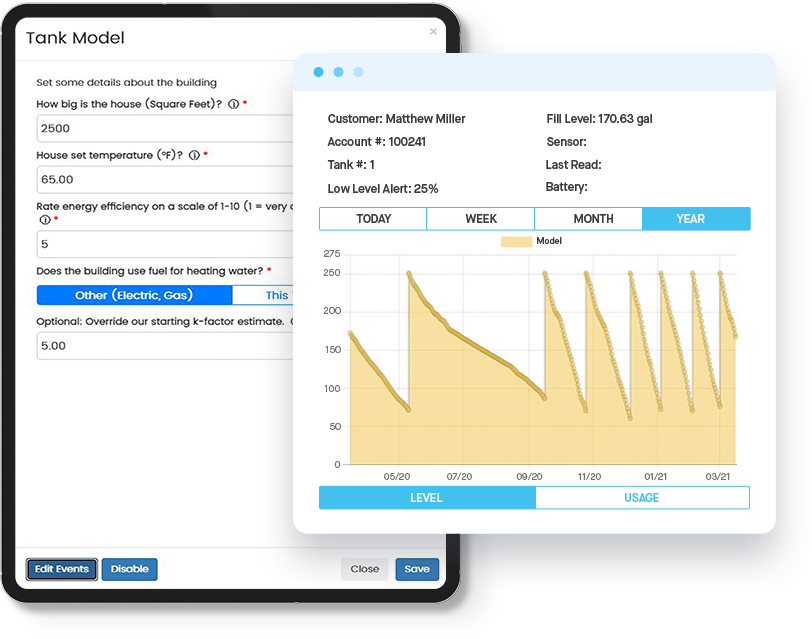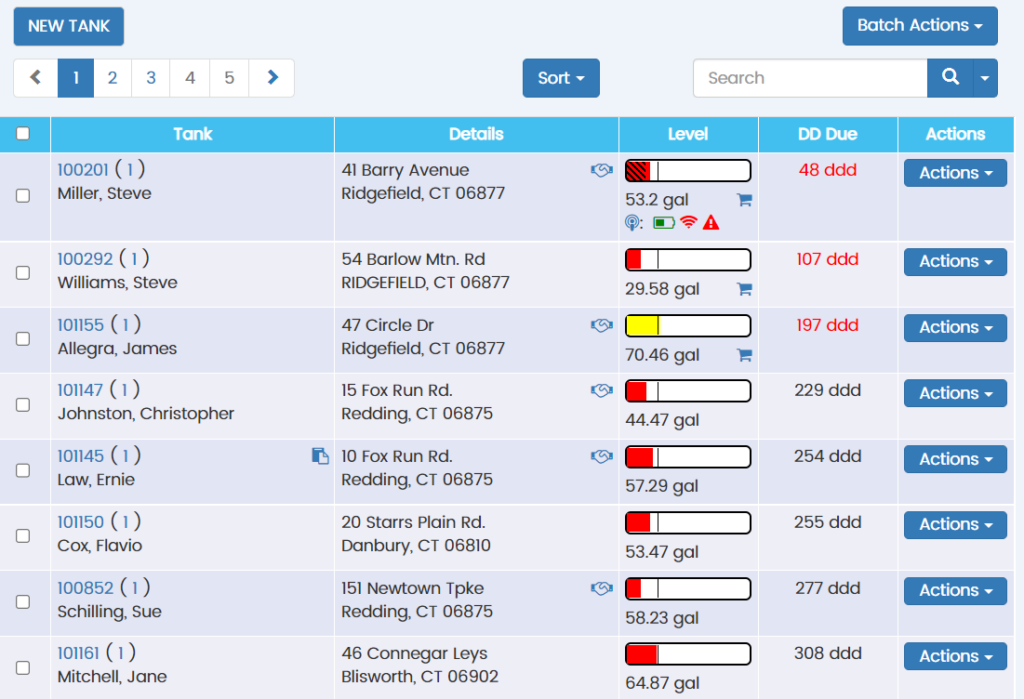As a heating oil provider, one of your worst fears is letting your automatic delivery customers run out. A runout is a headache for everyone involved. From making a middle-of-the-night delivery, to restarting the burner, nobody is happy. Not to mention the homeowner with no heat or hot water…
In this post we’ll explore best practices to prevent runouts for your heating oil customers.
Automatic Delivery Customers
Heating oil customers on automatic delivery are often your best customer. They are less price sensitive than will-call customers. In addition, you get to decide when to delivery to them. If a storm is coming soon, you can top off your automatic customers and free up time for emergency will-call deliveries. Below are some best practices for preventing runouts on your automatic delivery customers.
Utilize Smart Degree Days
Degree day software relies on temperature data to determine usage. Be careful if you use an older software package, however. A good degree day solution will pull temperature data by zip code, rather than just for your office location as some old systems do. This is important, as the weather may be very different in one part of your delivery area compared to another. Just relying on one temperature to calculate the usage at all of your customers’ homes can be problematic.
A modern degree day system should allow you to input baseline information when you get started too. This should include square footage for the house, as well as an energy efficiency rating. This will help the system provide a better estimate of usage prior to your first couple of deliveries, after which a true k-factor can be calculated.


Assign Tags to Difficult Addresses
Prioritizing deliveries is an important step when it comes to preventing runouts. When bad weather hits, you don’t want to be stuck delivering to steep driveways in the hills.
Tags are a great tool for identifying such accounts. Tags are generally fully customizable, and can be used for snow-pulls, steep driveways, bad payers, and more. Once you set up a tag and assign it to various accounts, you can filter by that tag easily.

Use Tank Monitors For Tough-To-Predict Accounts
Tank monitors provide the ultimate insight into a customer’s tank level. A WiFi heating oil gauge, like the Smart Oil Gauge, typically uses an ultrasonic sensor to measure the tank level. An ultrasonic sensor can report the tank level to the nearest gallon which is much more precise than a float gauge. It will report the level back on a set interval throughout the day (usually 12 or 24 hours). It will also display usage (gallons per day/week/month/year) and battery level.
We do not recommend using tank monitors for all your automatic accounts. Quite frankly, most do not need one. That said, you will certainly have a number of accounts that would benefit from a Smart Oil Gauge.
Types of accounts that would benefit from a Smart Oil Gauge:
- Difficult-to-reach homes (outside of your normal delivery area)
- Hart-to-get-to homes (up steep hills or untreated roads)
- Steep driveways (make sure to deliver prior to bad weather)
- Second homes (these are tough to predict because you don’t know when the heat is being used)
- High-usage homes (large homes or older homes)
- Homes with small tanks (especially older homes where a 275 gallon tank only lasts a couple of weeks during the cold season)

Will-Call Customers
Even though you are not responsible for preventing runouts for your will-call customers, there are ways to help anyway. Having a good website with online ordering will make it super easy for your will-call customers to reorder from you. They should be able to log in and have all their tank information already available.
Further, consider offering same-day delivery, or next-day delivery for a fee. The most efficient dealers do this well. For instance, if you are charging $3.00 a gallon for delivery two days from now, you may offer same-day delivery for $3.50, or next-day delivery for $3.25. This practice of ‘demand-shaping’ will help you plan your deliveries better. Your customers will also be more honest about whether the really need that fill-up today, or they just want it.
Another best practice is to offer same-day delivery, but for a fee. A $40 same-day delivery fee helps determine if someone really needs oil today. Often times customers will press for a delivery right away, but still have a quarter of a tank. Informing them that they can save $40 by waiting a day may help free up your capacity for actual emergencies.

Have a Clear Plan to Prevent Runouts
The best way to prevent runouts is to have a plan in place. Take care of your automatic delivery accounts using Smart Degree Days. Monitor the tough-to-reach accounts with tank monitors. And help your will-call customers schedule their deliveries by offering online ordering on your site.
If you utilize these tools that are available to you, you should be able to get through heating season with very few – if any – runouts.
Happy heating,
Steve
